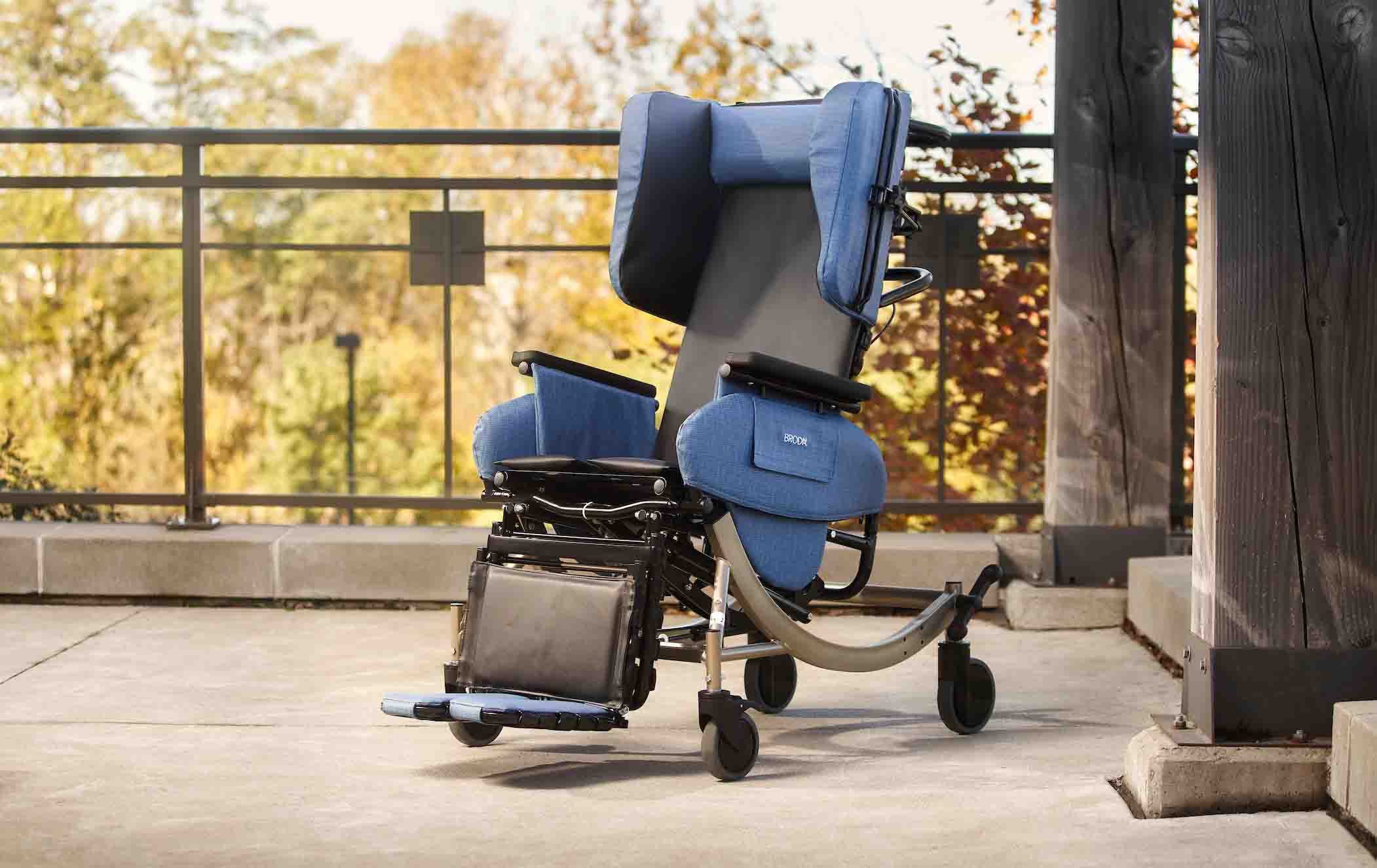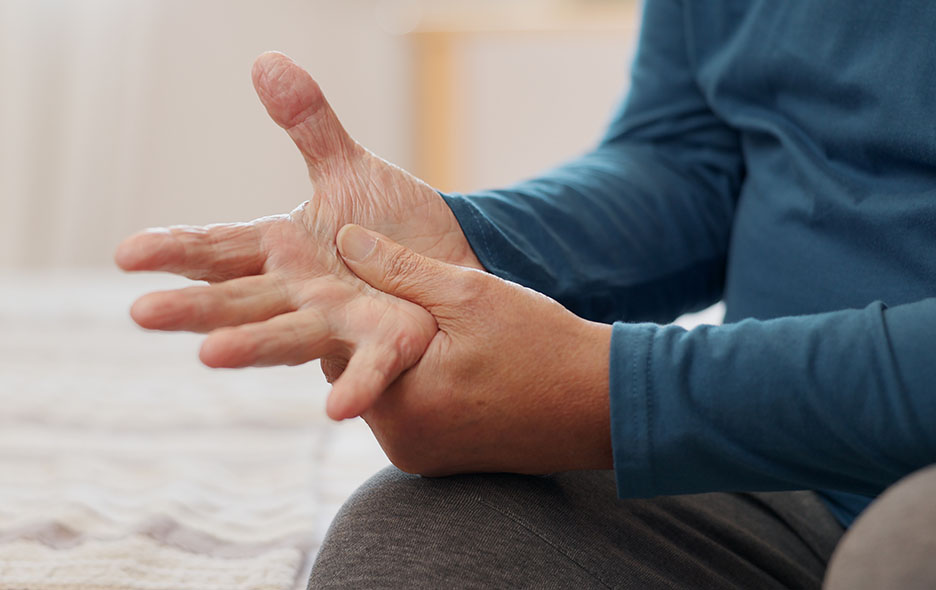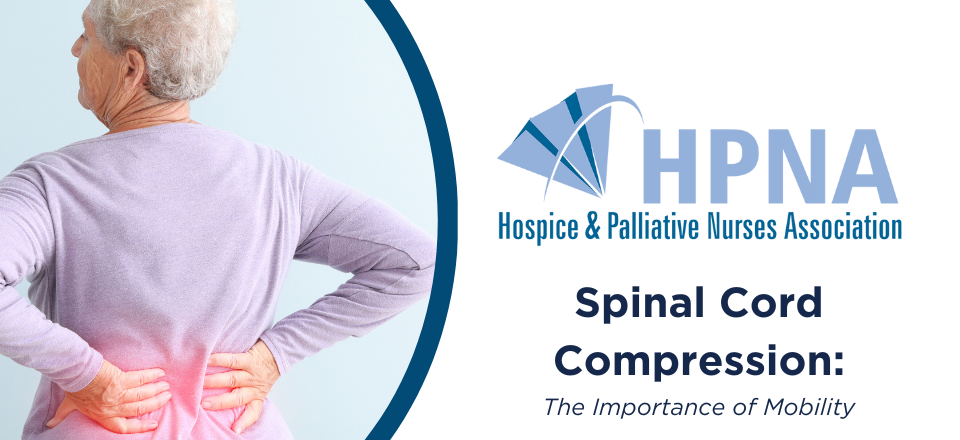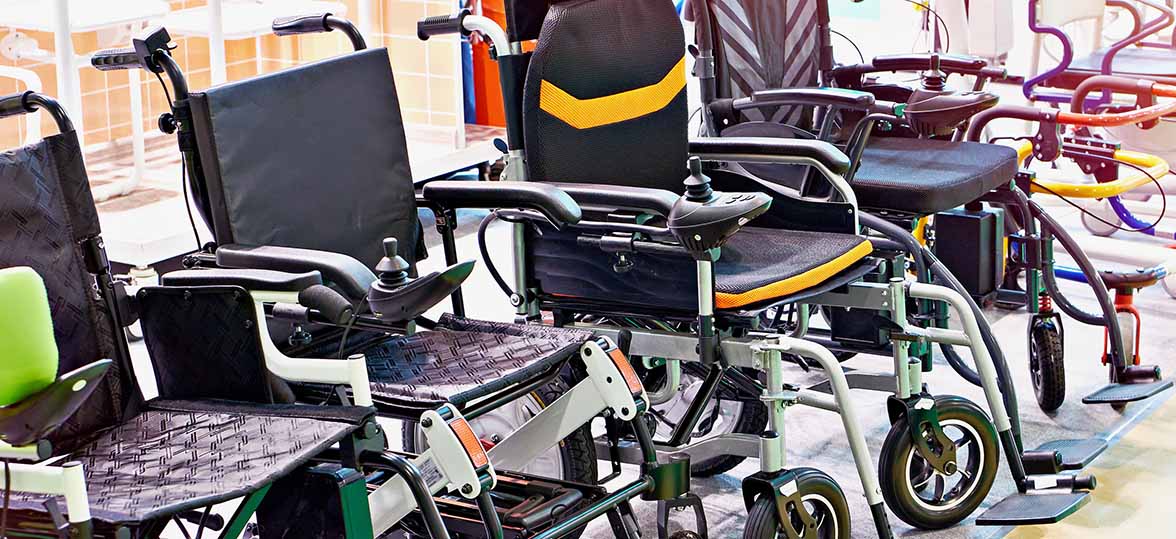There are an estimated 5.5 million Americans who rely on wheelchairs for their mobility. These individuals navigate daily life with a wide range of conditions, from spinal cord injuries to neuromuscular disorders. Recognizing these diverse conditions is crucial for developing products and support systems that enhance independence and quality of life.
We’ve created this wheelchair disabilities list to help medical professionals, caregivers, and facility designers better serve their patients, clients, and communities.
9 Conditions That May Require Wheelchair Use
Mobility challenges require adaptable solutions designed around every individual’s needs. The following wheelchair disabilities list helps specify requirements for unique conditions to provide the comfort, support, and tailored features necessary for improving the lives of individuals and empowering the caretakers who support them.

Alzheimer’s
Alzheimer’s progressively impacts an individual’s cognitive function, which often causes disorientation and difficulty navigating one’s environment. As Alzheimer’s progresses, it can become more difficult for individuals to walk, as they experience poor coordination that becomes more pronounced in later stages.
Mobility features that include assistance with fall prevention are important for those with Alzheimer’s. Wheelchairs that offer soothing motion features, such as rocking or self-propulsion, are beneficial as well. They can help to stimulate the individual’s sensory response, keeping them more engaged, reducing their anxiety, and helping to strengthen their muscles.
Lewy Body Dementia
Lewy Body Dementia involves distinct uncontrolled movements, restlessness, stooped posture, and other physical symptoms, on top of cognitive decline associated with dementia.
Individuals who suffer from these symptoms benefit from mobility support that assists with posture alignment with tilt and recline settings. These can help with a person’s breathing, swallowing, and overall comfort.
ALS (Lou Gehrig’s Disease)
ALS, or Amyotrophic Lateral Sclerosis, causes a progressive weakening of muscles and atrophy, making mobility increasingly challenging, while the person’s cognitive function usually remains unaffected.
Wheelchairs that distribute pressure to reduce potential injuries and are adaptable to changing physical needs are essential for those with ALS. It’s also important that they can provide secure transfer options.

Huntington’s Disease
Huntington’s Disease causes an individual to experience severe involuntary movements, cognitive decline, and changes in behavior that worsen over time.
Wheelchairs that provide specialized padding and support help to protect these individuals from extreme movements and self-injury, while posture support and restraints assist with safety without restricting necessary movement.
Multiple Sclerosis
Multiple Sclerosis causes the immune system to attack the protective coating of nerves in the brain and spinal cord. Individuals with MS experience fatigue, balance issues, weakening muscles, and sensitivity to temperature.
Mobility support that provides breathable materials helps these individuals with heat sensitivity. A wheelchair that provides self-propulsion in addition to caregiver assistance helps support physical activity when possible, which helps delay the progression of MS.
Spinal Cord Injuries
Spinal cord injuries cause a wide range of sensation and mobility loss depending on the location of the injury. Individuals may be unable to feel pressure or shift their weight below the injury location, leading to weakness or full paralysis.
Mobility solutions should help caregivers adjust positioning to prevent pressure injuries, making wheelchairs with multiple positions beneficial to assist with breathing and digestion.

Strokes
A stroke can cause varying degrees of paralysis, issues with coordination, and significant fatigue. Often, an extended period of rehabilitation is involved.
For mobility, a wheelchair with easy self-propulsion that can accommodate weakness on a single side of the body, provide foot positioning, and multiple adjustment options, will provide comfort, support, and even assist in the individual’s recovery.
Brain Injuries
Traumatic brain injuries (TBIs) often result in extended and challenging recovery periods, as individuals suffer balance impairments, cognitive issues, and unpredictable movement difficulties.
Wheelchairs that facilitate self-propulsion with hands or feet and provide dynamic rocking features help individuals in recovery by providing stimulating sensory feedback pathways. Adjustable components make it possible to accommodate ongoing progress in recovery.
Parkinson’s Disease
Parkinson’s Disease causes an individual to experience tremors, muscle rigidity, and impaired balance that can progress over time. Dizziness and a stooped posture may become more prominent at later stages.
A wheelchair that provides stability and comfort can help the individual avoid falls. A low-seat-height design makes it easier for them to gain independence through self-propulsion.

The Importance of Mobility Support
The right mobility support can dramatically improve an individual’s quality of life. For those with disabilities that require wheelchairs, the right wheelchair is about more than mobility—it represents independence, dignity, quicker recovery, protection, and comfort for individuals living with numerous health conditions.
Wheelchairs can help prevent falls, provide necessary stability, and accommodate the different positions an individual needs to adjust to throughout the day and over the course of their recovery. The optimal mobility device can restore an individual’s sense of empowerment as they interact with and adapt to their environment.
Learn more with Broda
Every individual’s mobility challenges are unique, which is why personalized solutions matter. Broda offers specialized wheelchair models to improve the daily well-being of individuals with numerous conditions.
References
- U.S. Department of Transportation. (2024, February 29). Secretary Buttigieg announces proposed rule to ensure passengers who use wheelchairs can fly with dignity. https://www.transportation.gov/briefing-room/secretary-buttigieg-announces-proposed-rule-ensure-passengers-who-use-wheelchairs-can
- Nie, Q., Rice, L. A., Sosnoff, J. J., Shen, S., & Rogers, W. A. (2024). Understanding wheelchair use in older adults from the National Health and Aging Trends Study. Archives of Physical Medicine and Rehabilitation, 105(3), 514–524. https://doi.org/10.1016/j.apmr.2023.09.006
- Byrne, J., Lynch, S., Shipp, A., Tran, B., Mohan, S., & Reindel, K. (2023). Investigating the Accuracy of Wheelchair Push Counts Measured by Fitness Watches: A Systematic Review. Cureus, 15(9), e45322. https://doi.org/10.7759/cureus.45322



